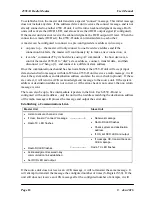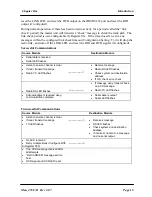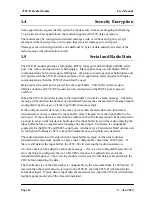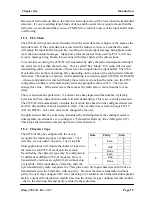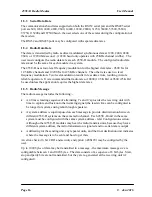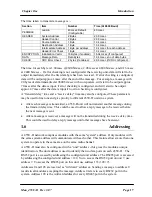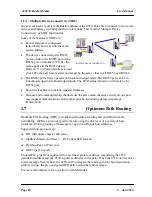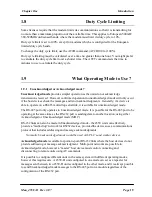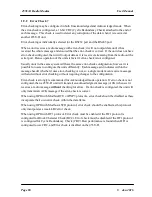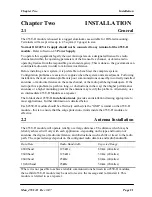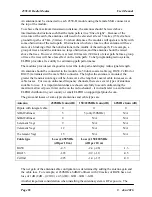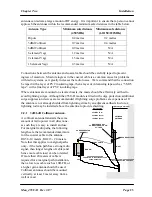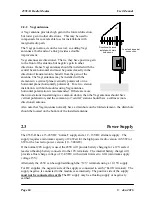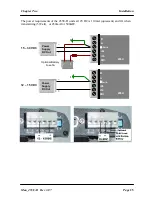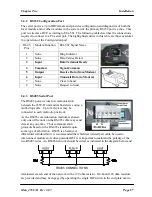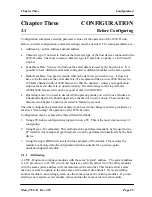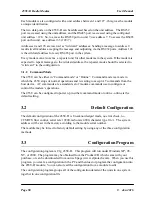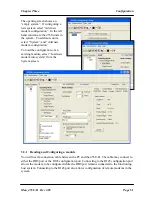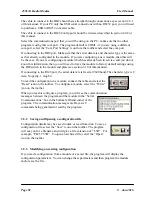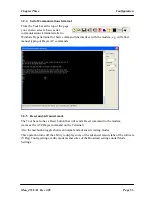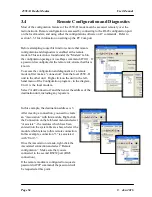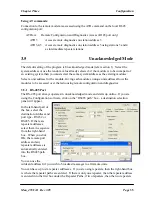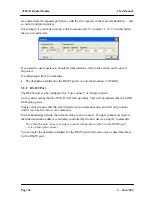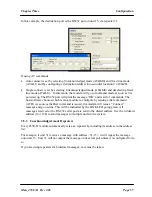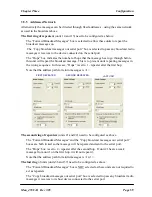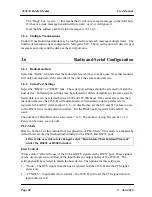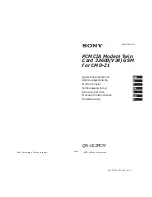
455U-D Radio Modem
User Manual
Page
26
©
Jan 2016
DCE HOST
DB9
MALE
MODEM
DB9
MALE
RD
TD
SG
RTS
CTS
DSR
DTR
DCD
RD
TD
SG
RTS
CTS
DSR
DTR
DCD
2
5
7
8
6
4
1
3
2
5
7
8
6
4
1
3
DCE HOST
MODEM
DB9
MALE
DB9
FEMALE
RD
TD
SG
RTS
CTS
DSR
DTR
DCD
RD
TD
SG
RTS
CTS
DSR
DTR
DCD
2
5
7
8
6
4
1
3
2
5
7
8
6
4
1
3
2.4
Serial Connections
2.4.1 RS232 Serial Port
The serial port is a 9 pin DB9 female and provides for
connection to a host device as well as a PC terminal for
configuration, field testing and for factory testing.
Communication is via standard RS232 signals. The 455U-D
is configured as DCE equipment with the pinout detailed
below. Hardware handshaking using the CTS/RTS lines is
provided. The CTS/RTS lines can be configured to reflect
the status of the local unit’s input buffer. The 455U-D
supports XON/XOFF flow control.
Example cable drawings for connection to a DTE host (a PC) or another DCE host (or modem)
is detailed below.
DB9 Connector Pinout
Pin
Name
Direction
Function
1
DCD
Out
Data carrier detect
–
- driven when link is established in Acknowledged mode
- driven when module is online in unacknowledged mode
2
RD
Out
Transmit Data from modem
– Serial Data Output
3
TD
In
Receive Data into modem
– Serial Data Input
4
DTR
In
Data Terminal Ready
- DTR can be configured to initiate low
power mode, or to force a link disconnection (“hang up” in
Acknowledged mode.
5
SG
Signal Ground
6
DSR
Out
Data Set Ready
- always high when unit is powered on.
7
RTS
In
Request to Send -
hardware flow control configurable
8
CTS
Out
Clear to send -
hardware flow control configurable
9
RI
Out
Ring indicator
- indicates another module is attempting to connect
in Acknowledged mode.

